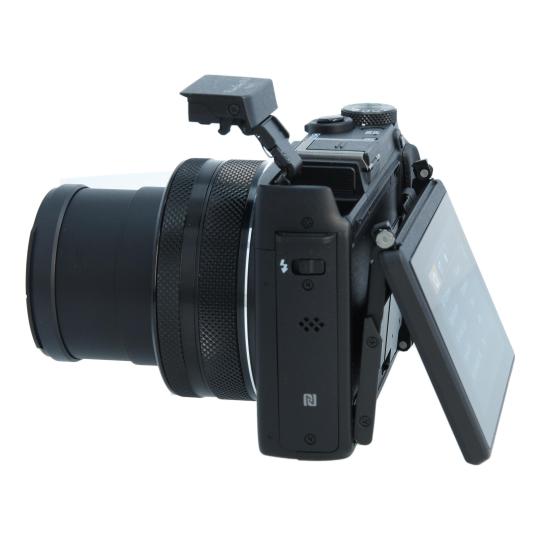

That sent me immediately to the menus, from where I could select one of the other dials (outer or rear) to handle that function.

In Aperture or Shutter priority mode, the inner dial controls those settings, respectively, but there's no longer direct control over exposure comp. The default setting in Program mode is fine - the inner dial adjusts exposure compensation. The pair of dials around the lens are another noteworthy feature. Speaking of buttons, I found myself scratching my head as to why there are two Wi-Fi-related buttons, and I kept pressing the upper one thinking it was for playback mode. There are a lot of buttons that surround the thumb rest so you have to be careful, as some buttons can be easy to bump. The camera can certainly be held with one hand, though I preferred the more solid feel of the 'custom grip'. So how do I like using the G1 X II? I'd give it a mixed review. The G1 X II's large sensor and fast lens allows for a decent amount of control over depth-of-field (excellent for a compact camera). Two hundred and forty shots isn't going to get most advanced amateurs through a day of shooting. The one thing that didn't improve, that really should have, is battery life, which is still miserable for a camera this big (and expensive). The LCD is nice enough (though a bit hard to see outdoors) and, while I wasn't taking any 'selfies' (a word I must admit that I despise), I did like how the screen can be pulled away from the body, instead of just tilting. While some may mourn the loss of the optical viewfinder (something I normally like having on my camera), the one on the G1 X wasn't great. Some folks (such as myself) prefer the fully articulating display on the original G1 X, while others will appreciate the slimmer body that comes along with a tilting screen. I liked how the LCD can be pulled away from the back of the camera, as it gives you a bit more flexibility when composing a shot from above. The autofocus system is much faster according to Canon, and you can finally focus on something remotely close to the camera (5cm). The lens is longer (24-120mm equiv.) and faster (F2.0-3.9), and the latter makes the camera pretty compelling when you throw in its 1.5"-type sensor. That's why I got pretty excited when I first laid eyes on the G1 X Mark II earlier this year. While its predecessor caught my eye, ultimately I was disappointed by the G1 X's rather clunky design, slow autofocus, lack of any real macro ability, and crummy battery life (among other things). Just don't expect it to have a built in wireless feature.Canon's PowerShot G1 X Mark II (and what a mouthful that is) is a camera I've been eagerly waiting to get my hands on this year. I love this camera and would recommend it to anyone who doesn't want to mess with an SLR but wants some of the higher end features of an SLR so you can do more with your shots. I had the camera on a tripod, a blast of wind came along and made it fall onto some rocks, other than a couple scratches it works fine. The upside of that is that it is very sturdy. Also, the camera is larger and heavier than a point and shoot camera so it will not fit in your pocket. On the downside it doesn't have a wireless remote, I had to spend extra to buy a wireless system that connects via the camera's hotshoe.
CANON POWERSHOT G1 X MARK II GEBRAUCHT SOFTWARE
It has facial recognition software and so many options this should be considered more of an SLR than a typical point and shoot camera. It has a video option which does a nice job, too. I took photos in Wind cave and Jewel cave and the flash did a great job of capturing details. The flash does a great job in low level light. This camera consistently received high marks and in the technical features it indicated the camera had a wireless system. I had a Pentax with an IR wireless remote that finally died, so I did research on the internet for a replacement. I bought this camera mainly for the one feature that ended up missing on it, a wireless remote.


 0 kommentar(er)
0 kommentar(er)
